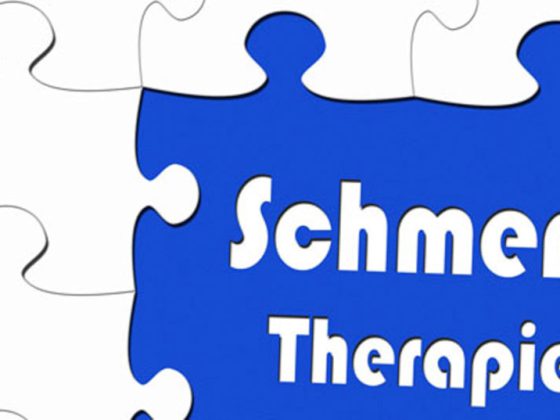A functioning immune system is vital. In congenital and acquired immunodeficiencies, part of the immune system does not function or is completely absent. Congenital immunodeficiencies are rare. About one in 1000 people in Switzerland is affected by a milder form of congenital immunodeficiency and about one in 10 000 by a severe form. In principle, three main problems can occur with congenital immunodeficiencies: Impaired defense against infections, immune dysregulation (e.g., autoimmune diseases and autoinflammatory syndromes), and increased risk of malignancy.
Because congenital immunodeficiencies are rare and can present in a wide variety of ways, they are often recognized late. In children, the diagnosis is additionally complicated because they are physiologically more prone to infections due to their immature immune system. A detailed medical history, physical examination and subsequent performance of targeted laboratory diagnostics are indispensable for making a diagnosis. If there is a suspicion of impaired resistance to infection, the following warning signals should make you sit up and take the patient to a specialist consultation for clarification:
- Eight or more purulent otitis media within one year
- Two or more severe sinus infections within one year
- Two or more cases of pneumonia within one year
- Repeated deep abscesses (collections of pus) of the skin and/or other organs.
- Two or more infections of the internal organs (e.g. meningitis, blood poisoning)
- Repeated or extensive infections caused by normally harmless germs (e.g., atypical mycobacteria)
- Fungal infection of the mucous membranes of the mouth or other areas of the skin beyond the first year of life
- Taking antibiotics for two months without significant improvement
- Failure to thrive
- Congenital immunodeficiencies in other family members
- Infectious diseases caused by attenuated pathogens in live vaccines (measles, varicella, polio, tuberculosis, rotavirus)
- Unexplained chronic redness of the skin all over the body in infants, especially on the palms of the hands and soles of the feet (graft-versus-host disease)
Congenital immunodeficiencies can be divided into eight major groups (see following chapters). These, in turn, are finally divided into the individual immunodeficiency diseases, which total more than 200.
Main groups of congenital immunodeficiencies
Antibody Deficiency Syndromes: The antibody deficiency syndromes, the so-called “Predominantly Antibody Deficiencies”, represent the largest group of congenital immunodeficiencies both worldwide and in Switzerland. Most of these patients suffer from CVID (“common variable immunodeficiency”), which occurs mainly in early school age or young adulthood and is characterized by frequent bacterial infections of the respiratory tract or gastrointestinal tract as well as an increased risk of autoimmunity and malignancies. It is a very heterogeneous clinical picture, which is probably based on many different genetic mutations.
Other antibody deficiency syndromes, however, manifest themselves in early childhood by frequent or single severe bacterial infections. Identifying these early presents a special challenge to family physicians and pediatricians. In case of suspicion, a local immunology center should be contacted. Prior to this, a simple basic diagnosis with differential blood count and determination of immunoglobulins IgG, -A, -M as well as vaccine antibodies against tetanus, Haemophilus influenzae and pneumococci can be performed.
In case of pathological laboratory values and recurrent infections, immunoglobulin substitution is therapeutically indicated. This can be administered intravenously once a month in a clinic or doctor’s office or subcutaneously once a week as home therapy and is usually necessary for life.
Phagocyte defects: Phagocyte defects, “Congenital Defects of Phagocyte number, function, or both” include both numerical neutrophil defects such as severe congenital neutropenia and functional neutrophil defects such as septic granulomatous disease (“CGD”). These defects are also characterized by clustered bacterial infections, as well as wound healing disorders, abscesses, and invasive fungal infections. CGD may also present with chronic recurrent diarrhea and is therefore often misinterpreted as inflammatory bowel disease, from which it is histologically indistinguishable.
If suspected, granulocyte function tests should be performed in addition to a differential blood count. This is possible in the immunology centers of most university hospitals after consultation.
In severe congenital neutropenia, substitution therapy with granulocyte colony-stimulating factor (G-CSF) must be considered to achieve adequate neutrophil counts and prevent severe bacterial infections and invasive fungal diseases.
In CGD, antibiotic and antifungal prophylaxis must be started early. Here, the only curative therapy is hematopoietic stem cell transplantation (HSCT). If no suitable donor can be found, gene therapy is also possible under certain conditions in individual centers (Switzerland-wide only in Zurich).
T-cell defects: T-cell defects belong to another main group, which is mainly diagnosed in infancy and early childhood. These are called “Combined Immunodeficiencies” because there is inevitably also a defect in B-cell function due to the lack of T-cell help. They usually present early with severe, often invasive infections, which may be caused by viruses, fungi, bacteria, or atypical pathogens such as Pneumocystis. Affected children may also be notable for chronic diarrhea and/or failure to thrive. If a T-cell defect is suspected, a blood count must be performed immediately, and if lymphocyte counts are <2000/ul, an immunology center must be contacted immediately because of the suspected diagnosis of severe combined immunodeficiency (“SCID”) in order to initiate further diagnostic and therapeutic steps.
The only curative therapy in this case is also HSCT or gene therapy, without which most children would die of infections already in the first year of life.
In older children and adults, congenital T-cell defects may also be the cause of symptoms. These are due to either congenital defects in T cell function or T cell development. They are based on gene defects that usually allow residual function, which is why the age of manifestation may be higher than in classic SCID. Increased susceptibility to infections, but also immune dysregulation such as granuloma formation, autoimmune diseases or an increased risk of malignancy can be the result.
Complement system defect: Severe bacterial infections such as meningitis and pneumonia may be indicative of a complement system defect. If this is suspected, a determination of the complement factors and testing of the alternative and classical complement pathways must be initiated. These tests, as well as granulocyte function tests, are available by appointment at the immunology centers of most university hospitals.
Since there is no curative therapy for complement defects, permanent antibiotic prophylaxis or antibiotic stand-by therapy is used here, depending on the clinical course. In addition, these patients should be provided with an appropriate emergency identification card, as should all other immunodeficiency patients.
Autoinflammatory syndromes: In the case of recurrent, mostly uniform (so-called periodic) fever episodes, one must always consider congenital immunodeficiencies from the group of autoinflammatory syndromes as a differential diagnosis. The most common disease from this group, familial Mediterranean fever, typically manifests as periodic fever accompanied by serositis (e.g., peritonitis, pleurisy, arthritis).
“Immune dysregulation”: Lymphoproliferations, a hemophagocytosis syndrome, enteropathies or autoimmune diseases can be indications of congenital immunodeficiencies and not infrequently still lead to a diagnosis from the field of “immune dysregulation” in late childhood or young adulthood.
Because of the often underlying excessive immune response, immunodeficiencies from these two main groups are treated with colchicine, classical immunosuppressants and/or biologicals, depending on the clinical picture and course.
“Combined immunodeficiencies with associated or syndromic features”: In addition, there are some syndromic diseases that are associated with an immunodeficiency and which are summarized in the main group “Combined immunodeficiencies with associated or syndromic features”. These include, for example, the hyper IgE syndrome, which can be misinterpreted as atopic dermatitis due to the high IgE value and the often additionally existing positive atopic history. Hyper-IgE syndrome is associated with recurrent staphylococcal skin abscesses and recurrent pneumonia.
“Defects of innate immunity: There are immunodeficiencies that exclusively affect the innate, non-specific immune defense, “defects of innate immunity”, and therefore either lead to severe, life-threatening infections in early childhood or are completely asymptomatic and thus remain undetected, since in later childhood many mechanisms of the specific, adaptive immune defense take over the tasks of the non-specific defense. In most cases, the initial infection is fulminant, but reinfection with the same pathogen does not occur because the formation of protective antibodies is normal.
In children affected by one of these immunodeficiencies, infections often proceed without or with very low signs of inflammation such as fever or CRP, so the severity of the infection is often underestimated. Therapy here consists primarily of early antibiotic therapy and, depending on the defect, immunoglobulin substitution. Because the testing necessary to make a diagnosis is complex, an immunology center close to the patient’s location should be contacted.
Regardless of the type of immunodeficiency, the goal should be to make an accurate diagnosis as early as possible in order to prevent the occurrence of organ damage through early adequate therapy and thus positively influence the quality of life and prognosis of these patients.
Useful links are:
www.immundefekte.ch
www.kispi.uzh.ch/de/zuweiser/fachbereiche/immunologie
Miriam Hoernes, MD
Prof. Dr. med. Jana Pachlopnik Schmid
HAUSARZT PRAXIS 2014; 9(9): 46-48












